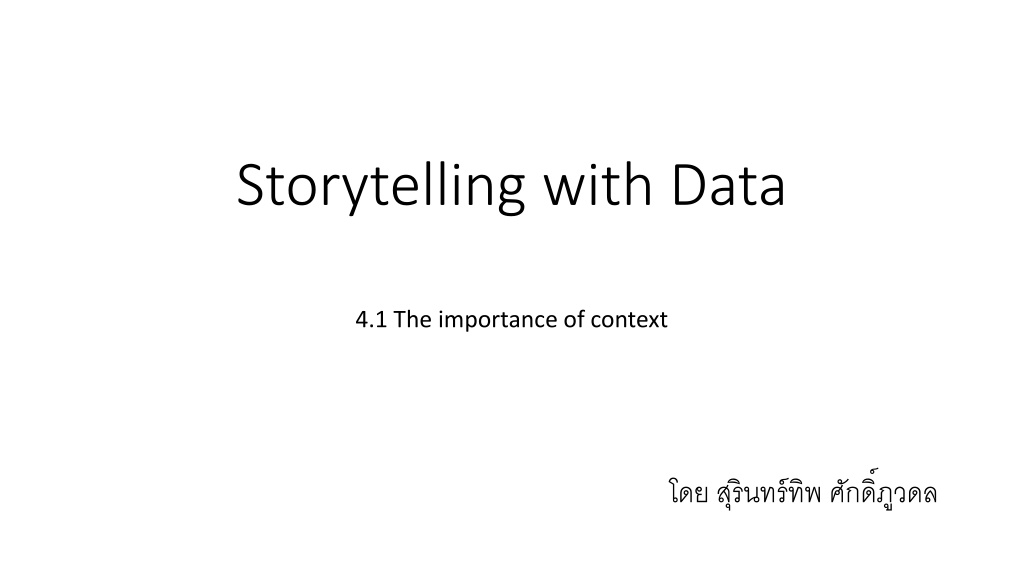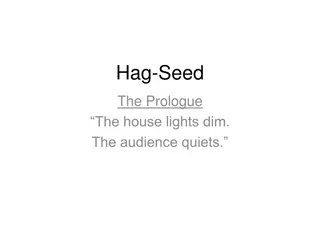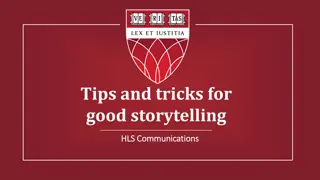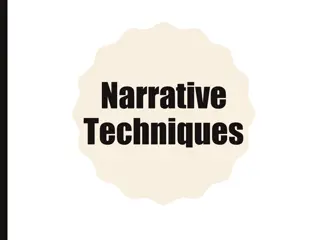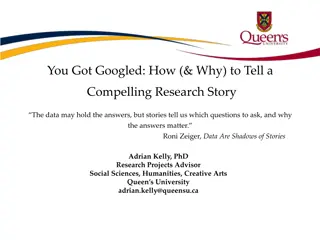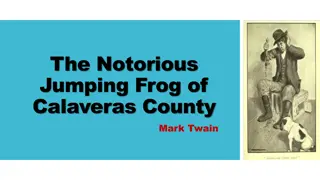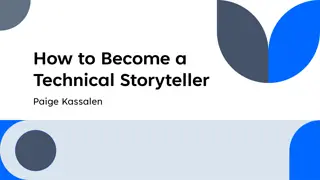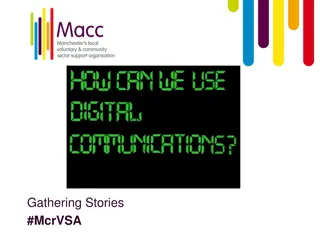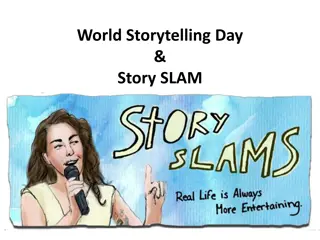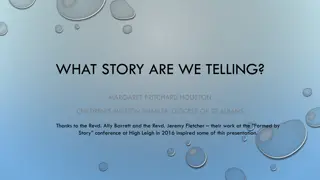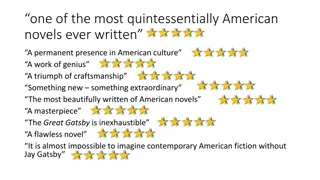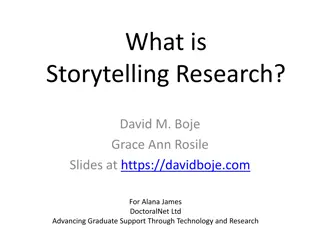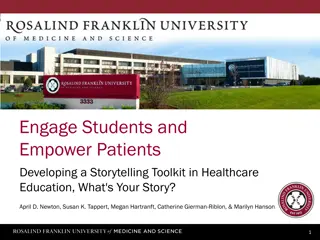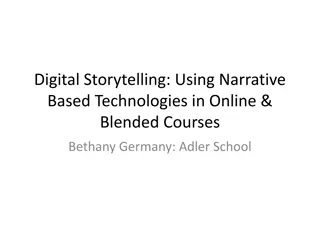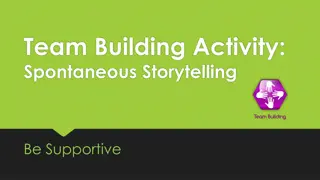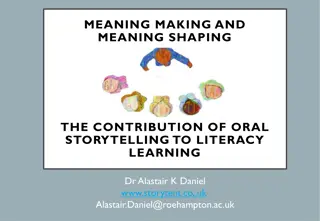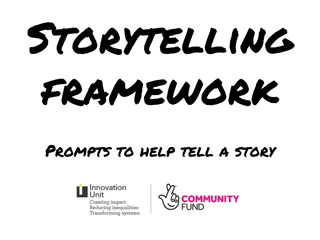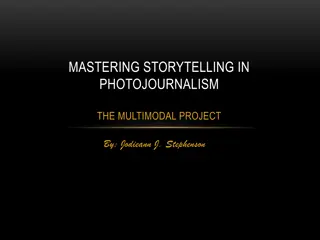Importance of Context in Data Storytelling
Success in data visualization hinges on grasping the context before crafting visuals or communications. Learn strategies for effective data communication by understanding the crucial components of context and setting yourself up for success.
Download Presentation

Please find below an Image/Link to download the presentation.
The content on the website is provided AS IS for your information and personal use only. It may not be sold, licensed, or shared on other websites without obtaining consent from the author.If you encounter any issues during the download, it is possible that the publisher has removed the file from their server.
You are allowed to download the files provided on this website for personal or commercial use, subject to the condition that they are used lawfully. All files are the property of their respective owners.
The content on the website is provided AS IS for your information and personal use only. It may not be sold, licensed, or shared on other websites without obtaining consent from the author.
E N D
Presentation Transcript
Storytelling with Data 4.1 The importance of context
Why is story telling important???? Why is story telling important???? There is a story in your data. But your tools don t know what that story is. That s where it takes you the analyst or communicator of the information to bring that story visually and contextually to life.
The same data set can be presented: Example 1 (before): showing data Example 1 (after): storytelling with data
2 data storytelling Example 2 (before): showing data Example 2 (after): storytelling with data
The importance of context ( ) Success in data visualization does not start with data visualization. Rather, before you begin down the path of creating a data visualization or communication, attention and time should be paid to understanding the context for the need to communicate. In this chapter, we will focus on understanding the important components of context and discuss some strategies to help set you up for success when it comes to communicating visually with data.
Things to think before visualizing Explanatory analysis ( ) There are a few things to think about and be extremely clear on before visualizing any data or creating content. First, To whom are you communicating? It is important to have a good understanding of who your audience is and how they perceive you.This can help you to identify common ground that will help you ensure they hear your message. do? You should be clear how you want your audience to act and take into account how you will communicate to them and the overall tone that you want to set for your communication. Second, What do you want your audience to know or Third, How can you use data to help make your point?
Things to think before visualizing Explanatory analysis ( ) Who What How
Who : Narrow your audience, you cannot talk to too many different people with disparate needs. Your audience : Identifying the decision maker is one way of narrowing your audience. The more you know about your audience, the better positioned you ll be to understand how to resonate ( ) with them and form communication that will meet their needs and yours. Visual: You (Developer): It s also helpful to think about the relationship that you have with your audience and how you expect that they will perceive you. Will you be encountering each other for the first time through this communication, or do you have an established relationship? Do they already trust you as an expert, or do you need to work to establish credibility?
What 1. Action 2. Mechanism 3. Tone
What 1. Action point where you think through how to make what you communicate relevant for your audience and form a clear understanding of why they should care about what you say. You should always want your audience to know or do something. What do you need your audience to know or do? This is the
What Prompting action: Here are some action words to help act as thought starters as you determine what you are asking of your audience: accept | agree | begin | believe | change | collaborate | commence | create | defend | desire | differentiate | do | empathize | empower | encourage | engage | establish | examine | facilitate | familiarize | form | implement | include | influence | invest | invigorate | know | learn | like | persuade | plan | promote | pursue | recommend | receive | remember | report | respond | secure | support | simplify | start | try | understand | validate | | | | | | | | | | | | | | | | | | | | | | | | | | | | | | | | | | | | | | | | | | | |
What 2. Mechanism At the right side of the spectrum, with a written document or email, you (the creator of the document or email) have less control. In this case, the audience is in control of how they consume the information. The level of detail that is needed here is typically higher because you aren t there to see and respond to your audience s cues. Rather, the document will need to directly address more of the potential questions. At the left, with a live presentation, you (the presenter) are in full control. You determine what the audience sees and when they see it. You can respond to visual cues to speed up, slow down, or go into a particular point in more or less detail.
Visual cues Data Visualization Visual cues Help, need to help Good Stop chrome-extension://efaidnbmnnnibpcajpcglclefindmkaj/https://dl.acm.org/doi/pdf/10.1145/3290605.3300280
What For live presentations, practice makes perfect Do not use your slides as your teleprompter! If you find yourself reading each slide out loud during a presentation, you are using them as one. This creates a painful audience experience. : material as you prepare for your presentation: Write out speaking notes with the important points you want to make with each slide. Practice what you want to say out loud to yourself: this ignites a different part of the brain to help you remember your talking points. It also forces you to articulate the transitions between slides that sometimes trip up presenters. Give a mock presentation to a friend or colleague. There are a few tips for getting comfortable with your 1. 2. 3. Present Present
What Live presentation ( ) : , : presentation : Project Slide Presentation
What 3. Tone communication to set? Another important consideration is the tone you want your communication to convey ( ) to your audience. Are you celebrating a success? Trying to light a fire to drive action? Is the topic lighthearted or serious? Your tone can not only affect how people perceive you but also their willingness to listen to you. Tone What tone do you want your :
How what we need them to know or do we can turn to the data and ask the question: What data is available that will help make my point? Data becomes supporting evidence of the story you will build and tell. After we can clearly articulate who our audience is and
Explanatory analysis Who, What, and How : (Explanatory analysis) Who, What, and How
Explanatory analysis Who, What, and How Who : : (audience) What we need from them: Visualization Data to present and convince audience :
Explanatory analysis Who, What, and How Who: The budget committee that can approve funding for continuation of the summer learning program. What: The summer learning program on science was a success; please approve budget of $X to continue. How: Illustrate success with data collected through the survey conducted before and after the pilot program
Consulting for context: questions to ask ( : ) (Context) 1. Client: 2. Stakeholder: 3. Your boss: Data Visualization
Consulting for context: questions to ask ( : ) (Context) What background information is relevant or essential? Who is the audience or decision maker? What do we know about them? What biases does our audience have that might make them supportive of or resistant to our message? What data is available that would strengthen our case? Is our audience familiar with this data, or is it new? Where are the risks: what factors could weaken our case and do we need to proactively address them? What would a successful outcome look like? If you only had a limited amount of time or a single sentence to tell your audience what they need to know, what would you say can lead to insightful conversation
The 3-minute story and the Big Idea Putting a significant constraint on the message (a short amount of time or a single sentence) can help you to boil the overall communication down( ) to the single, most important message. To that end, there are a couple of concepts that need to know and employ: the 3-minute story and the Big Idea
3minute story The 3 minute story is exactly that: if you had only three minutes to tell your audience what they need to know, what would you say? This is a great way to ensure you are clear on and can articulate the story you want to tell. Being able to do this removes you from dependence on your slides or visuals for a presentation.
Big Idea The Big Idea boils the so what down even further: to a single sentence. This is a concept that Nancy Duarte discusses in her book, Resonate (2010). She says the Big Idea has three components: 1. It must articulate your unique point of view; 2. It must convey what s at stake; and 3. It must be a complete sentence. 1. 2. 3. . ( + ) Remark : boils down =
3minute story: A group of us in the science department were brainstorming about how to resolve an ongoing issue we have with incoming fourth graders. It seems that when kids get to their first science class, they come in with this attitude that it s going to be difficult and they aren t going to like it. It takes a good amount of time at the beginning of the school year to get beyond that. So we thought, what if we try to give kids exposure to science sooner? Can we influence their perception? We piloted a learning program last summer aimed at doing just that. We invited elementary school students and ended up with a large group of second and third graders. Our goal was to give them earlier exposure to science in hopes of forming positive perception. To test whether we were successful, we surveyed the students before and after the program. We found that, going into the program, the biggest segment of students, 40%, felt just OK about science, whereas after the program, most of these shifted into positive perceptions, with nearly 70% of total students expressing some level of interest toward science. We feel that this demonstrates the success of the program and that we should not only continue to offer it, but also to expand our reach with it going forward.
Big Idea: The pilot summer learning program was successful at improving students perceptions of science and, because of this success, we recommend continuing to offer it going forward; please approve our budget for this program.
Storyboarding Storyboarding creates structure of your presentation. Storyboarding Software :
